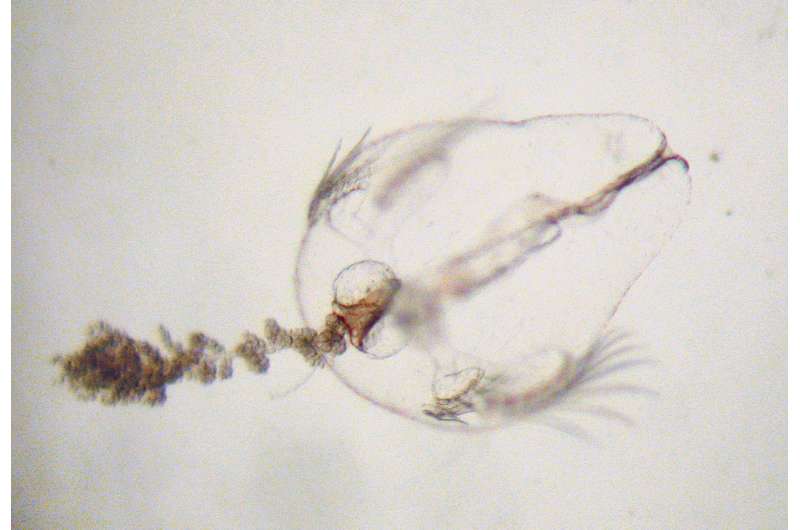Wound healing or regeneration—the environment decides?

An earthworm cut in two parts can survive and regenerate. For humans, the loss of limbs is a severe problem that can only be treated by complex surgery. However, among animals, there are numerous examples of self-healing mechanisms, especially among invertebrates. How these regeneration mechanisms function genetically and biochemically is one of the most exciting research questions in developmental biology and medicine.
An international team of biologists has now been able to demonstrate with the comb jellyfish Mnemiopsis leidyi that in this type of jellyfish, the mechanism of regeneration can change depending on the environmental conditions. The study has been published in Scientific Reports.
"Jellyfish are perfect candidates for this kind of research, while holding a key position at the phylogenetic base of the metazoan tree," says first author Katharina Bading, former Master student at GEOMAR and now PhD student at NTNU, Norway.
Serious injuries to comb jellyfish and their larvae can result from mechanical stress in rough seas or even predators. Depending on the season and where they live, the availability of nutrients can vary. "Whether and how the jellyfish react to these differences was our question," says Dr. Jamileh Javidpour from GEOMAR, corresponding author of the study.
Comb jellyfish larvae that live in a nutrient-rich environment were able to completely restore their bodies. Larvae that had to cope with fewer nutrients also survived and were able to heal their injuries, but were unable to fully regenerate their bodies. "Apparently, the comb jellyfish larvae are able to activate two fundamentally different regeneration processes depending on the external circumstances," explains Dr. Javidpour. "If the circumstances are not good enough for a complete cure, then at least it can save their own survival with a simpler process."
For the researchers from Kiel, the discovery is interesting because they investigate the pathways and success of invasive species. Mnemiopsis leidyi was most likely introduced to the Black Sea and the Baltic Sea through ballast water of ships from North America. "In the pumping operations, the jellyfish are mechanically heavily stressed. A flexible self-regenerating process can be an advantage. However, this aspect has hardly been considered so far," Katharina Bading points out.
"Apart from that, the discovery is fundamentally interesting in terms of how self-regenerating traits work in nature, and whether we can ultimately learn something from it for human medicine," Dr. Javidpour adds.
More information: Katharina Tissy Bading et al, Food availability drives plastic self-repair response in a basal metazoan- case study on the ctenophore Mnemiopsis leidyi A. Agassiz 1865, Scientific Reports (2017). DOI: 10.1038/s41598-017-16346-w
Journal information: Scientific Reports
Provided by Helmholtz Association of German Research Centres



















